When looking for a way to lighten my buffer and spring weight in my rifle, I came across the JP Enterprises Silent Capture Spring. They’re designed as a way to quiet and smooth out the buffer system, but there are a number of SCS setups to choose from.
The JP Silent Capture Spring allows you the ability to change out springs of varying weights, as well as the buffers from steel to tungsten to mimic a standard, H1, H2, or H3 buffer system. The setup you choose will depend on the rifle, carbine, or pistol it is going into.
JP makes a silent capture spring for AR-15, AR-10, 9mm, and even an SCS specific to Law Tactical folding stocks. And with each SCS having the option to swap out buffers and springs, it can be hard to decide which setup you need.
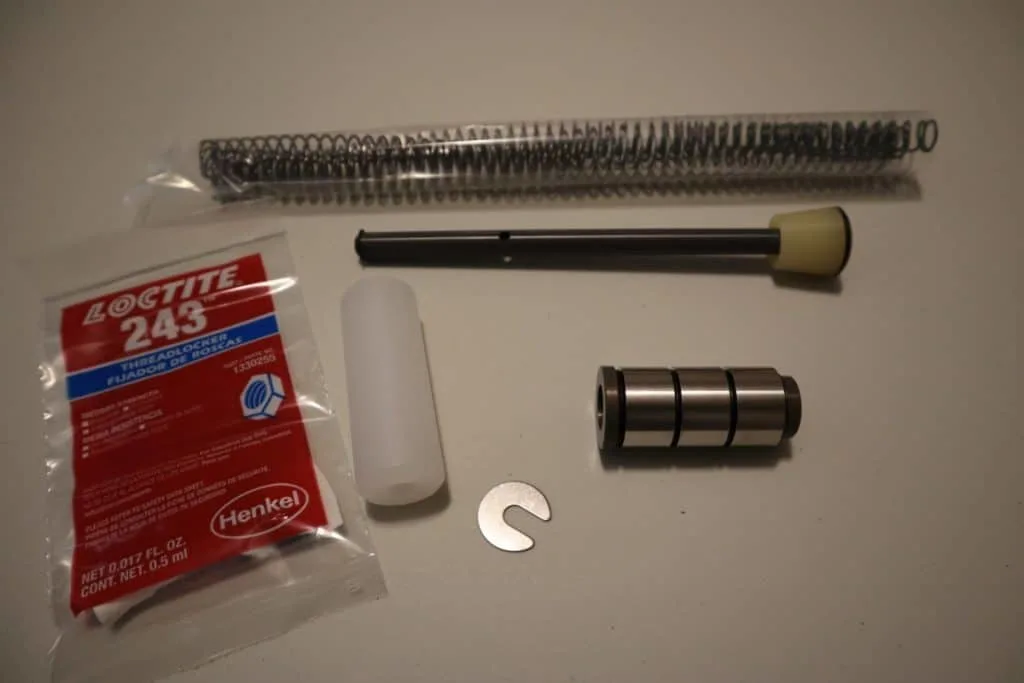
Which Silent Capture Spring Do I Choose?
So how do you decide which silent capture spring to choose for your setup? Well, I made this page to help walk you through the options and what will work for your weapon.
Typically, if your using a mil-spec bolt carrier on the AR-15 platform and have an adjustable gas block, you can use either standard or heavy. If you’re not going to tune your gas block to work with the SCS, there are a number of factors that will determine which one to get.
For the most part, the AR-10 platform will use the heavy SCS unless you plan on using a ‘low mass’ setup such as a light weight bolt carrier. The standard AR-10 SCS is designed to work with low mass operating systems.
I got my Silent Captured Spring from OpticsPlanet Here, I like using OpticsPlanet for their rewards program, but either way, the SCS was cheaper than buying direct from JP.
There’s a lot more to know about these silent capture springs before picking the right one for you, so keep reading.
Size and Caliber
First, you’ll need to select the model designed for your caliber. This is easy because it will be either AR-15, AR-10, or 9mm. Then you’ll need to select heavy or standard buffers.
But first, make sure the SCS will work with your bolt carrier. If you’re using a mil-spec bolt carrier, you don’t need to worry about the bolt carrier bore or channel, it will fit.
Bolt Carrier Bore
The SCS requires a minimum of 0.53 inches bore inside the bolt carrier. Because the bolt carrier actually slides over the rod on the SCS, the bolt carrier needs a large enough bore for it to fit.
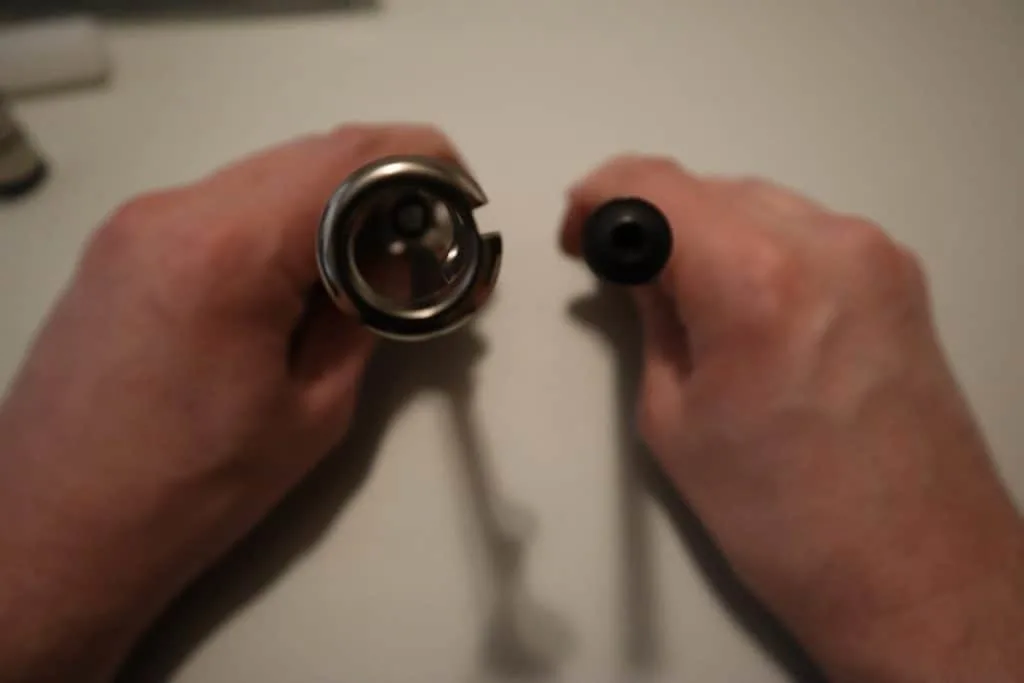
Mil-spec bolt carriers have a 0.625 inch bore and will fit perfectly fine. If you don’t have a mil-spec bolt carrier, make sure it will fit over the SCS rod before buying one.
Bolt Carrier Channel
The SCS requires a minimum bolt carrier channel of 3.75 inches for AR-15s and 4.4 inches for AR-10s. Again, this is because the SCS rod actually enters the bolt carrier during operation.
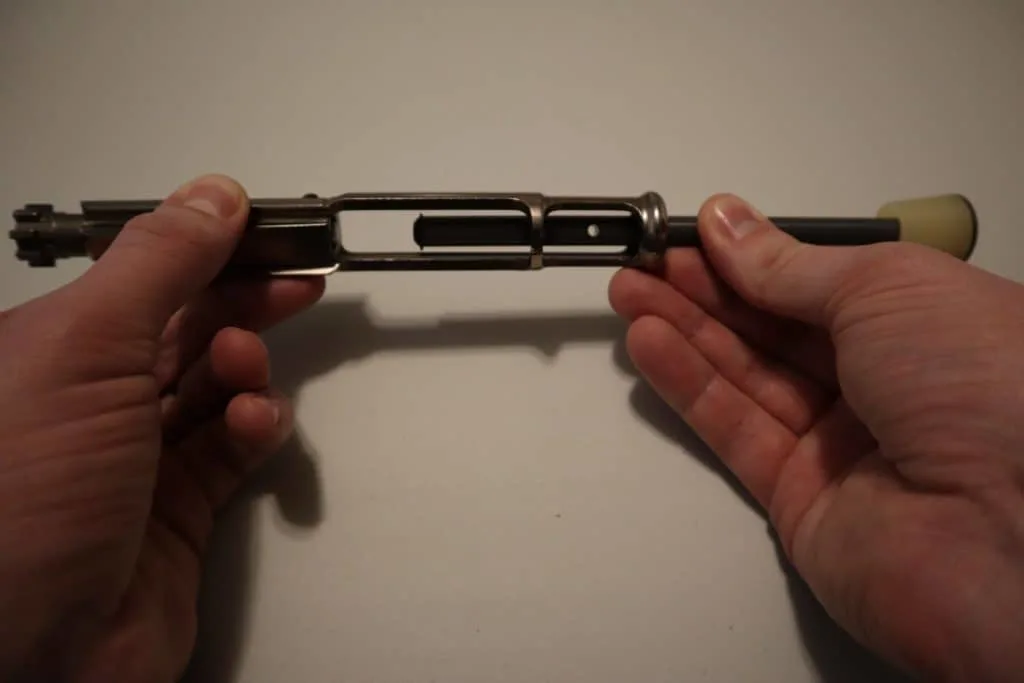
If you’re using a mil-spec bolt carrier, the channel is big enough to work with the silent capture spring without issues.
A longer than normal bolt stroke could also prevent you from using the SCS. A longer bolt stroke could cause the SCS rod to hit the firing pin inside the bolt, and it won’t cycle properly.
Here’s a list of known bolt carriers and platforms that Do Not work with the JP SCS:
- Primary Weapon Systems MOD1 carriers
- Certain 9mm bolt assemblies (Some 9mm bolts have a removable mass, which will allow function with the 9mm SCS)
- HK 416 platform
- DPMS GII
- Remington R-25 GII
- Daniel Defense DD5
- HK MR762
- Sig Sauer 716
- Rock River Arms LAR-8
This is not a complete list. Please check your components for compatibility before using with the JP silent capture spring.
That being said, if you’re using a mil-spec bolt carrier on an AR platform, it will fit just fine.
Buffer Tube
The SCS will fit standard carbine and AR pistol length buffer tubes as well as rifle length buffer tubes with an included spacer.
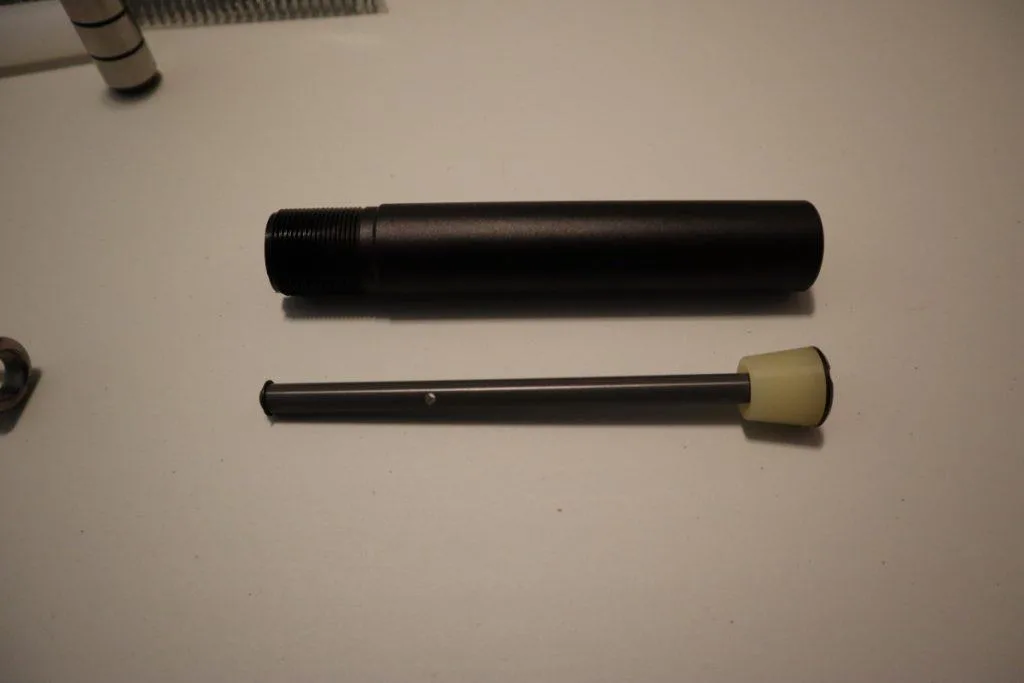
If you have a mid-length buffer tube (about 7 3/4 inches) found on a lot of .308s now, the SCS will not work without modifying the rifle length spacer.
You can contact JP themselves to get a modified spacer, cut the rifle length spacer yourself, or just use plastic washers to fill in the gap in the buffer tube.
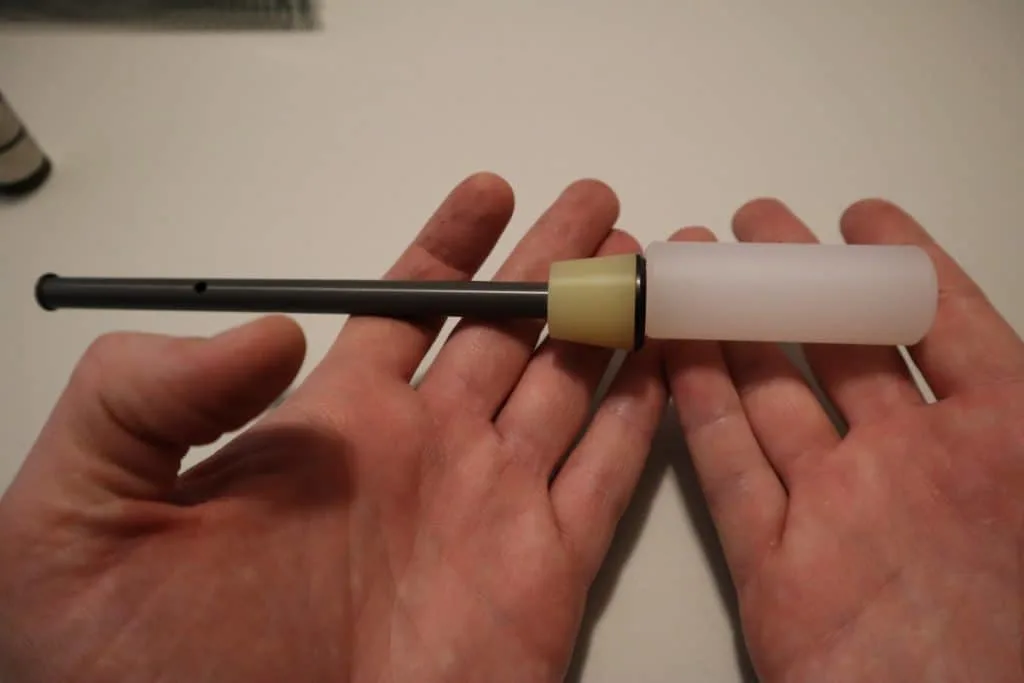
JP Silent Capture Spring Standard Vs Heavy
So we’ve now verified the SCS will fit your setup, and you know which version you’re getting. Now we need to figure out if you need the standard weight or heavy weight version of that SCS.
If your weapons manufacturer specifically states a certain buffer weight, then you need to choose that buffer weight. For example, if an H2 buffer weigh is required for your rifle, the go with the heavy H2 silent capture spring.
But what if your building the rifle yourself or your using a shorter barrel or suppressor? There’s a number of things that can determine which SCS you go with.
Here’s what JP currently offers on the AR-15/AR-10 platforms:
| SCS | Part Number |
|---|---|
| AR-15 Standard | JPSCS2-15 |
| AR-15 Heavy H2 | JPSCS2-15H2 |
| AR-10 Standard | JPSCS2-10 |
| AR-10 Heavy H2 | JPSCS2-10H2 |
| Law Tactical Folding Versions | add ‘-LAW’ to part # |
AR-15/AR-10 Silent Capture Spring
Let’s start with the AR-15 and AR-10 platforms and then talk about the 9mm later on. Typically, a standard AR-15 in .223/5.56 or smaller and .300Blackout will use the standard weight SCS. Unless you are doing one of the following:
- Short barreled rifle
- Suppressed
- Select Fire
- Piston Operated
- Requires H2 Buffer
- Using .300 Blackout subsonic ammo
If you’re doing any of the above, go with the AR-15 Heavy H2 silent capture spring. If not, the standard SCS should work fine.
The opposite is true for the AR-10 platform though. You will most likely use the heavy SCS with the AR-10 unless you are building the rifle for ‘low mass’ operation, such as using a light weight bolt carrier.
If you are doing that, the above bullet list still applies. Even with a ‘low mass’ setup, if you’re doing anything on that list, you would use the AR-10 Heavy H2 SCS.
Here’s the flow chart pulled directly from jprifles.com:
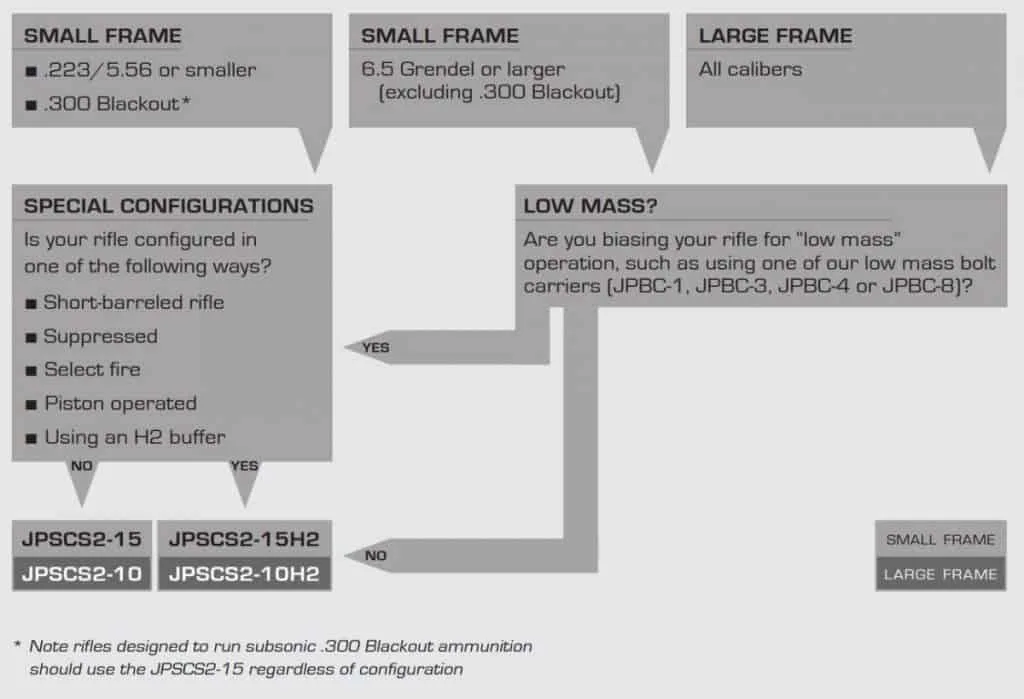
You may still have some questions, I know I did. Like, what if I’m using a ‘low mass’ system on the AR-15 platform? What if I’m using subsonic .300 Blackout but in a pistol length barrel?
Well, I’m doing exactly that. I am using a short barrel in .300 Blackout with a suppressor which would put me in heavy buffer territory. But, I’m also using subsonic ammo and a ‘low mass’ setup.
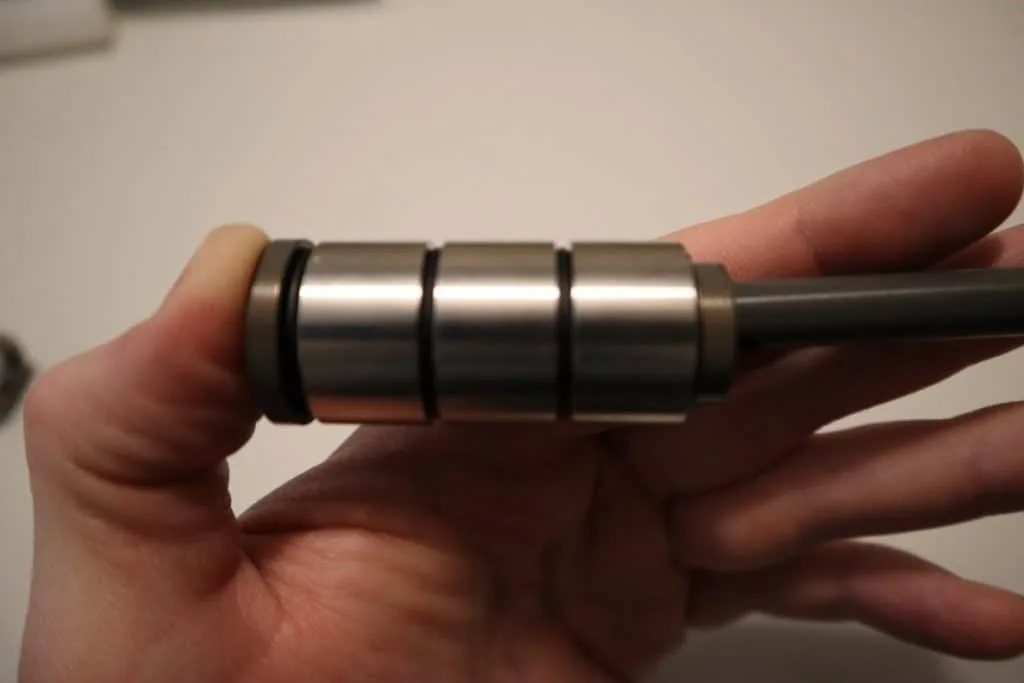
- I went with the standard buffer in this case because I plan on tuning the SCS (using a lighter weight spring) and knew ahead of time I wanted the lightest weight buffer they had.
- I will be using an adjustable gas block to tune the gas entering the receiver way down.
- I’ll also have a light weight bolt carrier group, so I won’t need the heavy buffer in this case.
Many AR-15 platform rifles come from the factory a bit over gassed. That’s why they recommend using the heavy buffer in so many cases. But if you plan on using an adjustable gas block and tuning the gas for your use, you can get away with the standard weight buffer most of the time.
AR-15/AR-10 SCS Buffer Weights
The SCS comes in either Standard or Heavy H2 but you can get different buffer weights to adjust the mass for your needs.
The SCS buffer comes in three sections. The Standard SCS has all three sections made of steel. The Heavy H2 SCS has 1 steel and 2 tungsten sections. You can buy additional steel or tungsten sections to achieve H and H3 buffer equivalents.
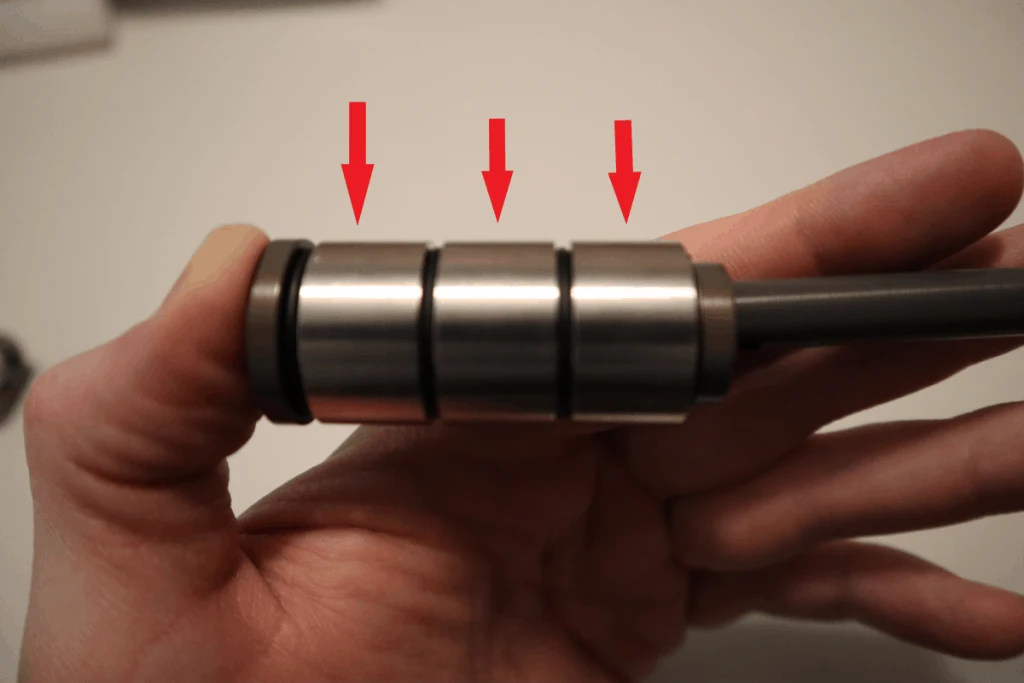
Here’s how the SCS would be setup for different buffer weights:
| SCS Setup | Buffer Equivalent |
|---|---|
| 3 Steel | Standard |
| 2 Steel, 1 Tungsten | H1 |
| 1 Steel, 2 Tungsten | H2 |
| 3 Tungsten | H3 |
Again, choose the setup your weapon manufacturer recommends. Or use an adjustable gas block and go with what will work best for your setup.
AR-15/AR-10 SCS Spring Weights
JP offers their SCS as a build kit. Which means you can get AR-15 or AR-10 SCS that come with a spring kit so you can tune the SCS for your use. You can also just buy a spring kit after the fact and tune the SCS that way.
Tuning the SCS is essentially just swapping out buffer sections and the spring to work most efficiently for your setup.
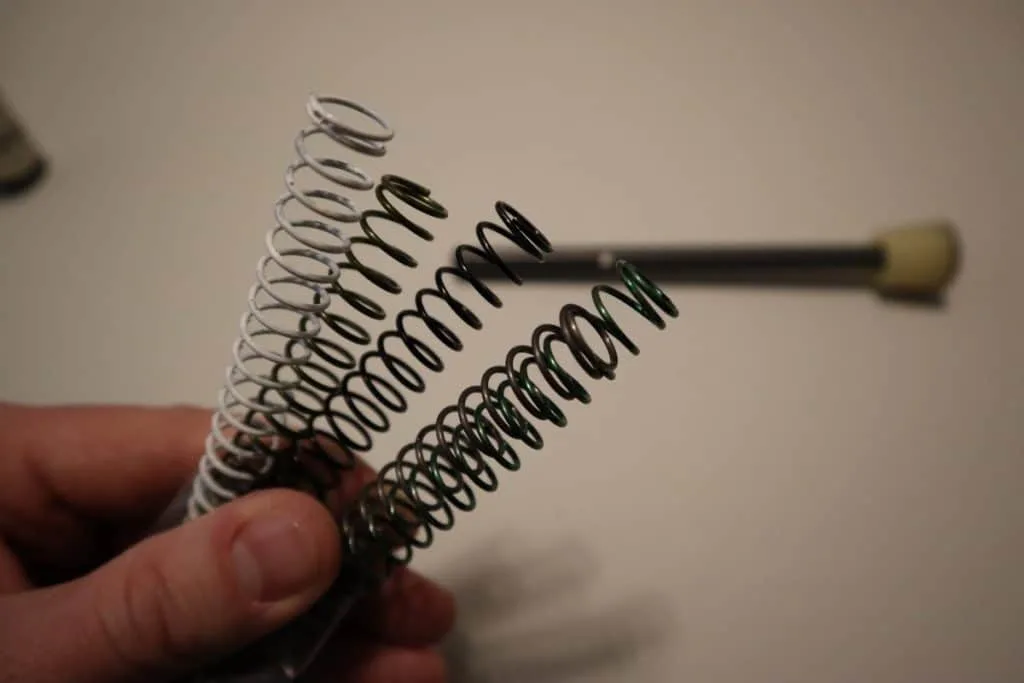
For example, I am using the lightest weight spring in the kit, and the lightest buffer weight setup they have. You will want to consider what ammo you plan on shooting and how you plan to tune your gas block to determine how you want to tune your SCS.
9mm AR Silent Capture Spring
JP makes 2 versions of their SCS for the 9mm AR platform, standard and short stroke length. Both can be adjusted with different weight buffer sections like the AR-15 and AR-10 models can.
Here’s what JP currently offers on the 9mm AR platform:
| SCS | Part Number |
|---|---|
| 9mm Full Stroke | JPSCS2-9-5H2 |
| 9mm Short Stroke Standard | JPSCS2-9SS-5 |
| 9mm Short Stroke Heavy 5H2 | JPSCS2-9SS-5H2 |
| 9mm Short Stroke Heavy 5H5 | JPSCS2-9SS-5H5 |
There are too many combinations of 9mm AR to cover every possible scenario. Luckily, JP designed the SCS to take 5 buffer sections allowing you to customize the steel vs tungsten ratio to your setup.
In general, you should have all steel buffer sections if you’re shooting low pressure ammo or using a shorter 9mm barrel with low port pressure. Otherwise, the SCS should cycle most ammunitions out of most 9mm AR rifles.
Bear in mind, more tungsten buffer weights will be heavier and cycle the weapon slower. Where more steel buffer weights will be lighter and cycle faster. This will affect felt recoil and operation of the weapon.
